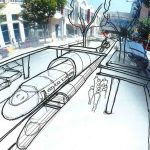
Eco-Friendly UI Design: Reducing Carbon Footprint through Sustainable Choices
- Post
- August 7, 2023
- UI Design, UI/UX Design, Web Design
- 0 Comments
In today’s fast-paced digital landscape, user interface (UI) design plays a pivotal role in shaping user experiences. As we embark on a journey towards a greener and more sustainable future, it’s crucial to acknowledge the environmental impact of our design choices. In this comprehensive guide, we explore the realm of eco-friendly UI design and delve into innovative strategies that reduce carbon footprint while maintaining exceptional user experiences.
Sustainable UI Design: A Green Revolution in the Digital Realm
In recent years, the concept of sustainability has permeated various industries, and UI design is no exception. Our commitment to creating visually captivating interfaces must align with a responsibility to minimize ecological harm. Sustainable UI design seeks to strike a balance between aesthetics and eco-consciousness, transforming the digital landscape into a hub of eco-friendly creativity.
Mindful Material Selection: Paving the Path to Sustainability
Every pixel counts, and so does every material choice. Sustainable UI design begins with selecting eco-friendly materials. Embracing recyclable, biodegradable, and low-impact materials ensures that the digital products we create leave a smaller ecological footprint. From color palettes to textures, each element contributes to the overall sustainability of the design.
Optimized Visual Elements: Enhancing Appeal while Reducing Energy Consumption
Visual allure need not come at an environmental cost. By optimizing visual elements, we can strike a harmonious balance between aesthetics and energy efficiency. Thoughtful use of colors, images, and animations minimizes the energy required for device displays, thus contributing to a reduced carbon footprint.
Streamlined User Experience: Navigating Simplicity for Environmental Good
Less is more, especially for the environment. Streamlining user experiences not only simplifies navigation but also conserves energy. A clutter-free design reduces the need for excessive processing power, resulting in faster loading times and energy savings.
The Power of Dark Mode: Illuminating the Path to Energy Efficiency
In darkness, there’s light—a sustainable one. Dark mode isn’t just a design trend; it’s an eco-conscious choice. Dark backgrounds require less energy to display, making it an effective way to reduce power consumption and extend device battery life.
Responsiveness and Compatibility: Designs That Adapt and Conserve
Adaptability isn’t just a virtue; it’s a sustainable strategy. Responsive design ensures that UI elements adjust seamlessly across various devices, reducing the need for multiple versions and, subsequently, minimizing carbon emissions associated with excessive production.
Efficient UI Design Tools: Navigating the Landscape of Eco-Friendly Options
The toolkit matters—choose wisely. Selecting UI designing tools that align with sustainability goals is imperative. Tools that offer energy-efficient features, streamlined workflows, and collaboration capabilities enable designers to create impactful interfaces while minimizing resource consumption.
Collaborative Design: Uniting Forces for a Greener Tomorrow
Unity begets sustainability. Collaborative design processes foster creativity while diminishing resource waste. By involving stakeholders, developers, and users, designers can create interfaces that meet user needs without unnecessary features, thereby promoting an eco-friendly approach.
Modular Design: Building Blocks for Sustainable Creativity
Eco-consciousness starts with the basics—literally. Modular design encourages the creation of reusable components, reducing redundancy and streamlining design iterations. This approach not only conserves time but also curtails energy consumption in the long run.
Measuring Sustainability: Metrics for Eco-Friendly UI Design Success
Quantify the green revolution. Just as performance metrics drive UI design, sustainability metrics should gauge the ecological impact. Tracking factors such as energy consumption, load times, and user engagement helps in refining designs for maximum environmental benefit.
Final Words
In the ever-evolving landscape of UI design, sustainability stands as a beacon of progress. By making conscious choices, adopting eco-friendly tools, and collaborating effectively, we can drastically reduce our carbon footprint while crafting visually captivating and intuitive interfaces that resonate with users. Our commitment to eco-friendly UI design paves the way for a brighter, greener digital future.
Commonly Asked Questions
Q1: How does dark mode contribute to energy efficiency?
Dark mode uses less energy to display content on screens, making it an energy-efficient choice. It reduces power consumption, extends device battery life, and minimizes the strain on the environment.
Q2: Can sustainable UI design still be visually appealing?
Absolutely. Sustainable UI design marries aesthetics with eco-consciousness. By choosing eco-friendly materials, optimizing visual elements, and embracing minimalism, designers can create visually appealing interfaces that prioritize environmental sustainability.
Q3: What are some eco-friendly UI design tools?
Several eco-friendly UI design tools are available today. Some notable options include Figma, Adobe XD, and Sketch, which offer features that promote energy efficiency, collaboration, and streamlined workflows.
Q4: How can responsive design contribute to sustainability?
Responsive design ensures that UI elements adapt seamlessly to different devices, reducing the need for multiple versions. This approach minimizes resource consumption, production waste, and carbon emissions associated with creating device-specific designs.
Q5: Why is collaborative design important for eco-friendly UI design?
Collaborative design involves various stakeholders in the design process, promoting efficient resource use and preventing unnecessary features. By uniting forces, designers can create interfaces that meet user needs without excessive resource consumption.




